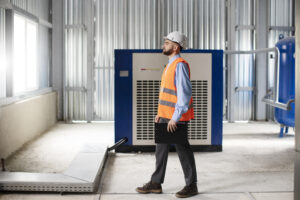When it comes to creating a comfortable and energy-efficient home in Central Austin, selecting the right HVAC (Heating, Ventilation, and Air Conditioning) system is crucial. With the city’s warm, humid summers and mild winters, it’s essential to invest in an HVAC system that meets your specific needs, ensuring optimal indoor comfort throughout the year. In this article, we’ll walk you through the process of choosing the right HVAC system for your home, highlighting key considerations such as climate, efficiency, size, and budget.
Understanding Your HVAC Needs
The first step in selecting the right HVAC system for your Central Austin home is to assess your specific heating and cooling needs. Central Austin’s climate, with its hot and humid summers and mild winters, means that your system will be working hard during peak seasons, particularly in the summer months. Factors such as the size of your home, the number of rooms, the level of insulation, and your energy efficiency goals all play a role in determining the appropriate system.
Types of HVAC Systems
There are several types of HVAC systems to choose from, each with its benefits and drawbacks. The most common types include:
1. Central Air Conditioning and Heating System
A central air system is one of the most popular choices for homes in Central Austin. This system uses a network of ducts to distribute cool air in the summer and warm air in the winter, providing whole-house heating and cooling.
- Pros: Efficient for larger homes, quiet operation, and consistent temperature control throughout the house.
- Cons: Requires ductwork installation, which can be expensive if not already present.
2. Ductless Mini-Split System
Ductless mini-split systems are ideal for homes without existing ductwork or for those looking to add cooling to specific rooms or areas. These systems have an outdoor compressor unit and one or more indoor air handlers that are installed directly in the rooms they cool.
- Pros: No need for ducts, energy-efficient, easy to install, and allows for zoning (cooling or heating specific areas of the home).
- Cons: Higher initial installation cost compared to traditional systems, requires regular maintenance for the air handlers.
3. Heat Pumps
Heat pumps are versatile systems that can provide both heating and cooling. In the cooling season, they work like an air conditioner by transferring heat from inside the home to the outside, and in the heating season, they reverse the process, transferring heat from outside to inside.
- Pros: Efficient for both heating and cooling, energy-efficient, and can be used in mild winter climates like Austin’s.
- Cons: Not as effective in extremely cold temperatures, and may require supplementary heating systems for the coldest days.
4. Geothermal HVAC Systems
A geothermal HVAC system uses the earth’s stable temperature to heat and cool your home. This system uses a heat pump and underground pipes filled with a heat-transfer fluid to regulate indoor temperatures.
- Pros: Very energy-efficient and environmentally friendly, long lifespan, minimal maintenance.
- Cons: High upfront installation costs due to the need for ground loop installation, not always suitable for every home due to land requirements.
Considerations for Choosing the Right System
When selecting the right HVAC system for your home in Central Austin, several factors should be considered. These include:
1. Energy Efficiency
Energy efficiency is one of the most important considerations when choosing an HVAC system. An energy-efficient system will help you save money on utility bills and reduce your environmental impact. Look for systems with high SEER (Seasonal Energy Efficiency Ratio) ratings for air conditioners and high HSPF (Heating Seasonal Performance Factor) ratings for heat pumps.
- Tip: Consider upgrading to a high-efficiency system, even if the upfront cost is higher. The long-term energy savings can offset the initial investment.
2. Size of Your Home
The size of your home plays a significant role in determining the size and capacity of your HVAC system. A system that is too small won’t be able to adequately heat or cool your home, while a system that is too large will cycle on and off too frequently, leading to higher energy consumption and wear and tear on the system.
- Tip: Have a professional HVAC technician perform a load calculation to determine the correct size for your home. This calculation takes into account factors such as square footage, insulation, windows, and orientation to the sun.
3. Climate Considerations
As mentioned earlier, Central Austin experiences hot and humid summers and mild winters. This means your HVAC system should be more focused on cooling and dehumidifying during the summer months. While winters are generally mild, the system should still be able to provide efficient heating when necessary.
- Tip: Opt for a system with a higher cooling capacity and one that is capable of handling humidity. Systems that have dehumidifiers integrated or those that can be added to the system are ideal for Central Austin’s climate.
4. Indoor Air Quality
Indoor air quality is an important consideration, especially if anyone in your household suffers from allergies or asthma. Some HVAC systems have built-in air filtration systems that can help remove allergens, dust, and other particles from the air.
- Tip: Look for systems that have high-quality air filters, such as HEPA filters, or consider adding an air purification system to improve air quality in your home.
5. Noise Levels
No one likes a loud air conditioning system running throughout the day and night. When choosing an HVAC system, consider its noise levels. Modern systems are designed to be quieter than older models, but some units are still louder than others.
- Tip: Check the decibel rating of the system and choose one that operates quietly. Ductless mini-split systems, for example, tend to be quieter than traditional central air systems.
6. Installation and Maintenance
The installation process and the long-term maintenance of your HVAC system should also be considered. Some systems require more extensive ductwork installation or regular maintenance to keep them running efficiently.
- Tip: Consult with an HVAC professional to determine the level of maintenance required for the system you’re considering and ensure it’s within your budget. Regular maintenance, such as filter changes and annual inspections, will extend the lifespan of your system.
Budgeting for Your HVAC System
Your budget will play a significant role in determining which HVAC system you choose. The upfront cost of the system, installation fees, and ongoing maintenance costs should all be considered when making your decision.
Initial Costs
HVAC systems vary in price depending on the type and size of the system, as well as the complexity of the installation. For example, a geothermal system will generally cost more to install than a traditional central air system.
Operating Costs
In addition to the initial cost, you should factor in the system’s operating costs, including electricity or gas bills. Systems with higher energy efficiency may have a higher initial cost but will save you money over time.
Incentives and Rebates
Some energy-efficient HVAC systems are eligible for rebates or incentives from the government or utility companies. Be sure to check for any available programs that can help offset the cost of purchasing and installing a new system.
Choosing a Reputable HVAC Contractor
Once you’ve decided on the type of HVAC system that best fits your needs, it’s time to select a reputable HVAC contractor for installation and maintenance. A professional contractor will assess your home, recommend the best system for your needs, and ensure proper installation.
- Tip: Look for a contractor who is licensed, insured, and has good customer reviews. Ask for estimates from multiple contractors and ensure that the quotes include all costs, including installation and any additional equipment or modifications required.
Conclusion
Choosing the right HVAC system for your Central Austin home is a significant decision that will impact your comfort, energy efficiency, and budget. By carefully considering factors such as climate, energy efficiency, system size, and maintenance requirements, you can select a system that meets your needs and ensures a comfortable living environment year-round. Don’t forget to work with a trusted HVAC contractor who can help you make an informed decision and provide professional installation and maintenance services.




